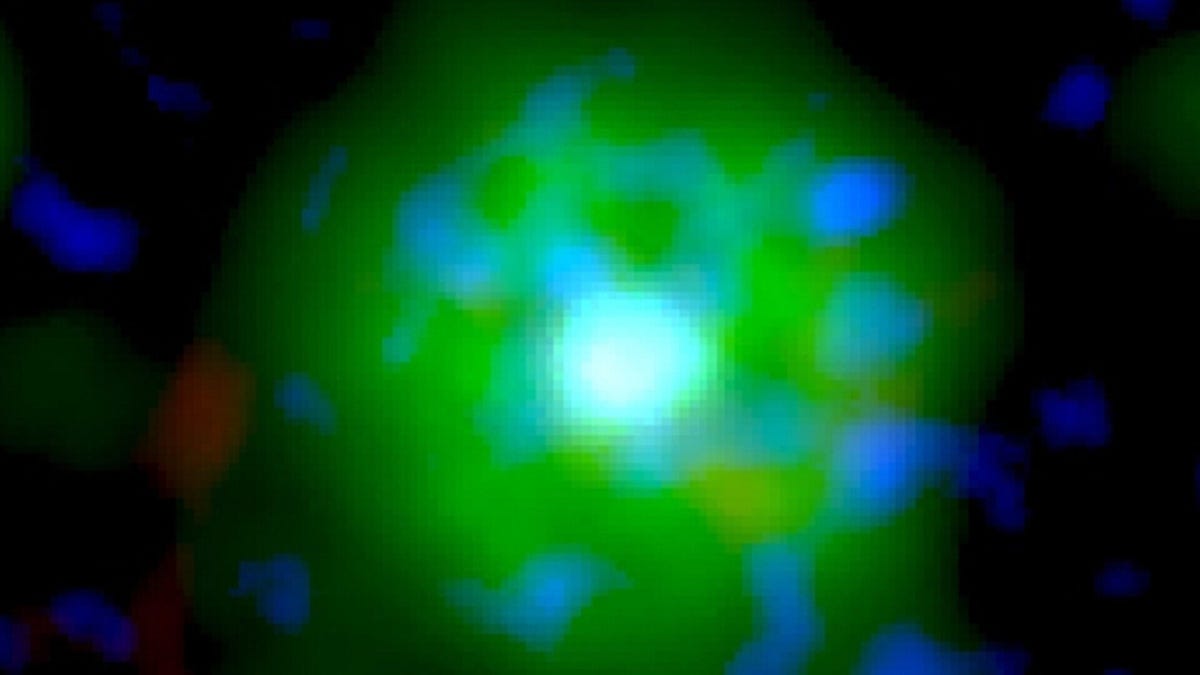Strange new star created by colliding white dwarfs is like nothing we've seen before
The aftermath of a white dwarf collision shows a never-before-seen type of star in a neon green nebula.
Far, far into the future, our sun will become a white dwarf star, a dense, dead remnant of itself. There are many white dwarfs lurking out in the cosmos and, sometimes they collide. Astronomers think the merger of two white dwarfs may have produced a previously unseen type of star, a type of zombie furnace risen from the dead. When seen in X-ray light, the nebula around this new star glows an eye-popping green thanks to neon gas.
The European Space Agency released an unusual view of the star on Monday, saying "this image shows a new type of star that has never been seen before in X-ray light." The star, J005311, is found in a dense cloud of dust and gas -- a nebula -- known as IRAS 00500+6713.
The star first came to astronomers' attention in 2019, and it was obviously an oddball. "Back then, astronomers already reported that the object has very high wind speeds and is too bright, and therefore too massive, to be an ordinary white dwarf," ESA said in a statement on Monday.
A team led by astrophysicist Lidia Oskinova of the University of Potsdam in Germany took a fresh look at the star using ESA's XMM-Newton X-ray telescope. The team published a paper on the star in the journal Astronomy & Astrophysics in December.
White dwarf collisions can be destructive for the stars involved, but these white dwarfs didn't follow the typical playbook. According to ESA, the team suggests "what we see in the image is a new type of X-ray source powered by the merger of two white dwarfs."
X-ray telescopes like XMM-Newton let us see cosmic objects in a different way from optical telescopes like NASA's Hubble. "Many celestial objects generate X-rays in extremely violent processes," ESA said. XMM-Newton is able to see this action and contribute to our understanding of nebulae, galaxies, supernovae and black holes.
The new X-ray study gives a more complete picture of what's happening with the star in the nebula. Its fate is sealed. ESA said it's very unstable and will likely collapse into a neutron star -- which is what happens when a star runs out of fuel at the end of its life -- within 10,000 years. But it will have been glorious while it lasted.
Follow CNET's 2021 Space Calendar to stay up to date with all the latest space news this year. You can even add it to your own Google Calendar.


